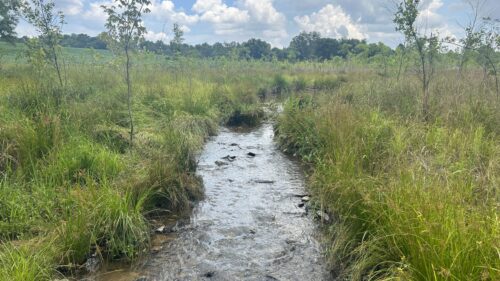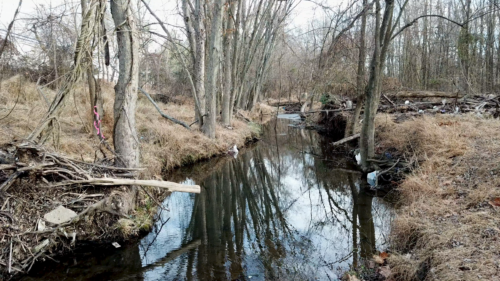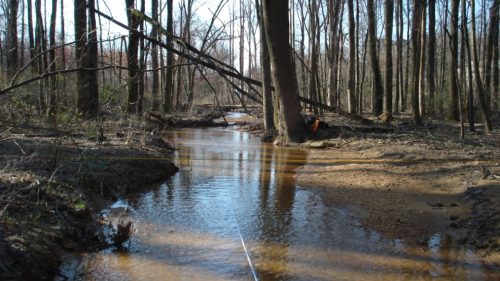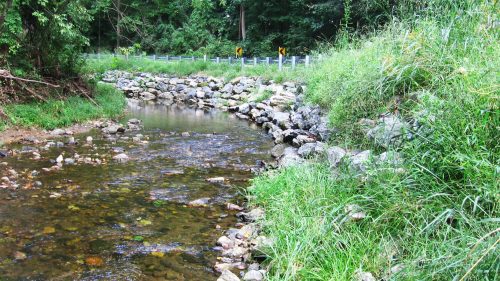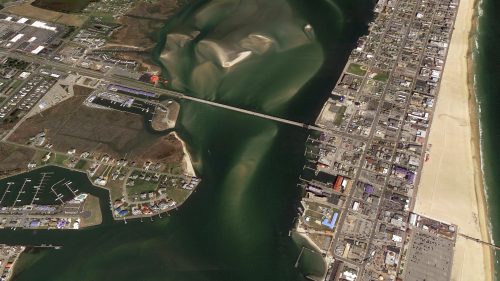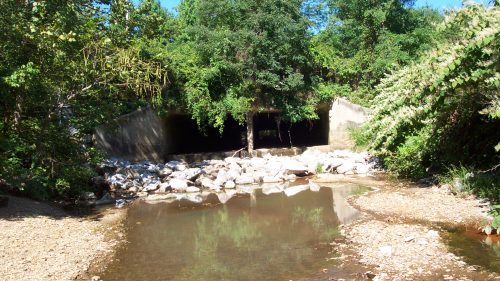Natural/Ecological Services
Natural Resources Inventories
Owners face a myriad of regulatory constraints and design and construction options while seeking to avoid impacts to natural resources. Making the wrong decisions based on inaccurate information can result in regulatory disputes, lost time due to permitting needs, additional mitigation requirements, and an increase in costs over the full project life cycle.
Natural resources investigations are essential components in the design and implementation of successful projects. They set the stage for proper analysis of project alternatives, and they provide important information to the decision makers throughout a project’s planning, design, and construction stages.
JMT’s team of environmental scientists and specialists provide accurate and defensible resource inventories in accordance with established federal, state, and local regulatory guidelines, and for a wide variety of environmental, ecological, biological, and habitat contexts. We perform accurate and comprehensive natural resource investigations in a timely, cost-effective manner.
JMT has a wealth of experience and knowledge in providing the following specific services:
- Wetland and waterways delineation
- Wetland functions & values assessments
- Forest stand delineations & forest conservation plans
- Rare, threatened & endangered species surveys
- Invasive species surveys & management
- Stream corridor assessments
- Benthic macroinvertebrate & fisheries studies
- Biological/botanical investigations
- Ecological risk assessments
- Soils investigations
Ecological Restoration
The health of our ecosystems, including water quality, water quantity, and the plants, fish and wildlife that depend on these habitats, is important to overall quality of life. It is also a significant driver of today’s regulatory framework. Ecological restoration mitigates unavoidable impacts to natural habitats from projects and helps owners manage their lands to meet particular habitat goals. Ecological restoration professionals must understand the context of the landscape, the local ecosystems, the landowner’s goals, the regulatory framework, and former/future anthropogenic alterations to the landscape for restoration and enhancement projects to be sustainable.
JMT’s integrated team of scientists, landscape architects, engineers, and planners work together to apply sound science and interdisciplinary design to create, enhance, and protect sustainable natural habitats and communities. Our staff has guided a large number of restoration projects from planning through design, construction and monitoring to assist clients in developing restoration and mitigation strategies and programs. Our collaborative team selects natural process solutions whenever appropriate and also incorporates more “engineered” solutions when necessary due to project constraints or goals.
We can provide the following tailored ecological restoration services to achieve sustainable ecosystems and landscapes:
- Tidal and non-tidal wetland creation and enhancement
- Stream restoration, including natural channel design, stabilization, and floodplain re-attachment
- Watershed restoration and implementation plans
- Floodplain / riparian buffer enhancement
- Living Shoreline design
- Beaches and dunes replenishment
- Forest conservation and reforestation planning
- Habitat conservation planning
- River basin conservation planning
- Invasive species management planning
- Tax ditch enhancement
- Best management practices for water quality design / implementation
- Nutrient trading and ecosystem services financial incentives – banking
- Grant assistance for restoration project implementation
- Stormwater wetlands design
- Low Impact Development (LID) design
- Resource protection area planning
- Stream and wetland construction management and post-construction monitoring
Watershed Assessment and Planning
The health of our streams and rivers, including water quality, water quantity, and the fish and wildlife that depend on these habitats, is vital to the quality of life of citizens and is also part of today’s regulatory framework. The sources and causes of impacts to stream and river health must be determined in order to restore and protect these resources. Watershed assessments are integral tools used in conjunction with best management practices to meet regulatory Total Maximum Daily Load (TMDL) requirements and to develop comprehensive plans, greenspace plans, water resource plans, and stormwater and wastewater management plans.
JMT’s scientists, engineers, and planners develop watershed assessments, watershed management plans, and used watershed restoration modeling to assist private sector, government agency, and non-profit sector clients in developing strategies and programs to achieve their particular goals. Our watershed assessment and watershed planning staff provide tailored services including:
- Watershed assessment planning, modeling, and restoration plans
- Source water protection plans
- Water quality monitoring studies and analyses
- Biological monitoring and analyses
- Hydrologic and hydraulic modeling
- River basin conservation plans
- Chesapeake Bay TMDL assistance
- TMDL load reduction tracking and modeling
- Local stream TMDL assistance
- Best management practices implementation frameworks
- Agricultural and regulatory compliance
- Nutrient trading and ecosystem services financial incentives
- Innovative solutions to pollution issues
- Watershed-linked ground water quality analyses
- Grant assistance for watershed project implementation
- Stormwater modeling, planning, and retrofit assistance
- Comprehensive planning assistance with water resource elements
- Pollutant load modeling based on future land use changes
Environmental Monitoring
Environmental monitoring is a broad field with many facets. Monitoring of mitigation sites to determine the success of compensatory mitigation provided under Section 404 of the Clean Water Act for unavoidable impacts to jurisdictional resources is just one. With the increase in potential for exposure to various types of contamination or potentially hazardous materials, environmental monitoring is recognized as an essential activity for many projects to prevent degradation of environmental resources. Regulatory statutes and local ordinances can dictate restrictions on noise and emissions. Many projects require an environmental monitoring component to ensure that activities associated with the project do not exceed baseline conditions and comply with all environmental permit requirements. This is especially so for large infrastructure projects, many of which are design/build and require significant environmental compliance and management programs.
JMT’s team of environmental scientists and specialists develop and implement baseline, pre-construction, and post-construction environmental monitoring plans for all types of projects. We provide environmental monitoring to establish baseline conditions during the project planning phase and continue monitoring through design, permitting, construction, and mitigation to ensure regulatory compliance and to protect project interests. JMT’s scientists and engineers are also experienced in collaborating to provide solutions to problems identified through environmental monitoring, which is particularly important to ensure the success of compensatory mitigation sites.
JMT has a wealth of experience and knowledge of performing environmental monitoring and providing assessments based upon standardized field methods. JMT provides the following environmental monitoring services to meet the needs of our clients:
- Post-construction monitoring of compensatory mitigation sites (wetlands and streams)
- Rare, threatened and endangered species populations
- Groundwater/surface water quality
- Terrestrial and aquatic biota
- Habitat
- Invasive species populations
- Reforestation
- NPDES/stormwater sampling
- Environmental construction inspection
- Noise, traffic, and air quality
Greenhouse Gas Inventories
Efforts to implement a sustainable business operations approach should include performing a Greenhouse Gas (GHG) Inventory and Carbon Footprint Analysis (CFA). A GHG Inventory compiles all emissions data from products, processes and lifestyle activities of a company or government entity. Greenhouse gases can be a result of transportation, waste processes, facility energy usage, and production of goods, among others. Once the GHG data is sorted and analyzed, a mitigation plan may be developed and implemented to reduce the carbon footprint of the owner.
JMT is uniquely positioned to assist clients with CFAs and GHG Inventories. We have experts on staff who understand all forms of transportation and the operations associated with them, along with facility energy experts and waste specialists. JMT’s sustainability experts coordinate with transportation, facility, and waste engineers to provide a full-service GHG Inventory, CFA, action plan, and implementation assistance.
Some of our services include the following:
- Transportation emissions
- Water and wastewater emissions
- Facilities energy analysis
- Green infrastructure
- Alternative energy
